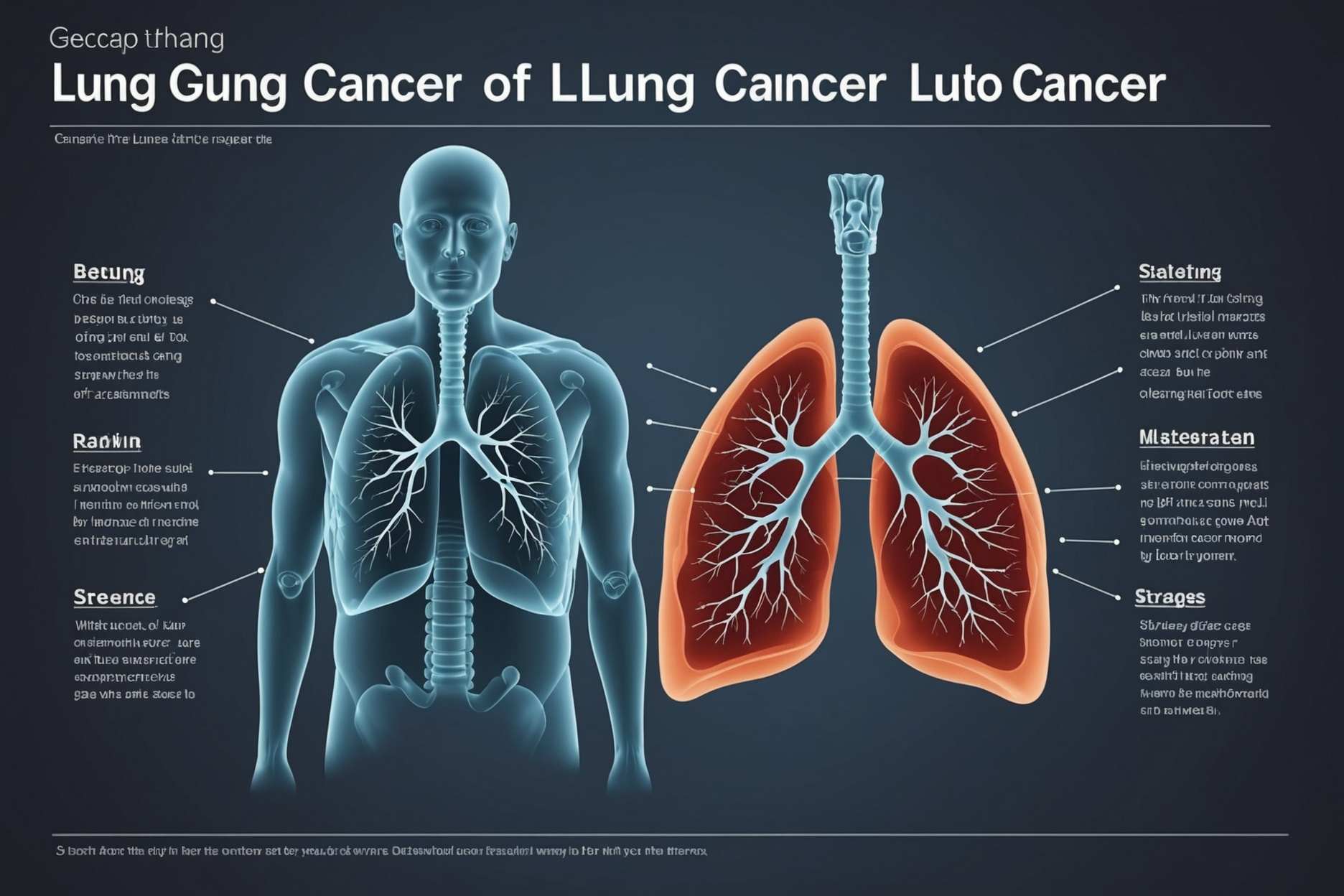Instructions to Figure out the Various Phases of Cellular breakdown in the lungs

Disease organizing offers a normalized technique to evaluate the size of a cancer and the level of its spread. For cellular breakdown in the lungs, fathoming these stages furnishes the two patients and medical care suppliers with an unmistakable system for therapy choices and guess. We should investigate the ramifications of each stage for cellular breakdown in the lungs.
**Stage 0 (Carcinoma in Situ):**
At this underlying stage, unusual cells are available however confined, meaning they have not yet attacked encompassing lung tissues or metastasized to different region of the body.
**Understanding Carcinoma in Situ:** This stage addresses the earliest type of malignant growth, with not all cases advancing to obtrusive disease. Continuous checking is significant for early location of any likely progression.
**Treatment Options:** Careful expulsion of the strange cells is normally the essential treatment, with laser or photodynamic treatment thought about in certain occurrences.
**Stage I:**
At this stage, the disease stays bound to the lungs and has started intrusive development without influencing the lymph hubs. This stage is additionally sorted in light of growth size and area:
- **Stage IA:** The cancer compares 3 cm.
- **Stage IB:** The cancer surpasses 3 cm however is under 4 cm and may include the primary bronchus or the lung's deepest layers.
**Treatment Implications:** Medical procedure is in many cases the essential strategy, with chemotherapy suggested if vital.
**Stage II:**
The disease has expanded in size or has spread to local designs or lymph hubs.
- **Stage IIA:** The growth is between 4 cm and 5 cm and may have spread to local lymph hubs.
- **Stage IIB:** The growth is bigger and may include bits of the lung's external surface, stomach, or related lymph hubs.
**Therapy Choices:** Careful mediation stays focal, with potential adjuvant treatments like chemotherapy or radiation in view of cancer qualities.
**Stage III:**
This stage shows huge spread inside the lungs and potentially to encompassing tissues.
- **Stage IIIA:** The cancer has reached out to lymph hubs in the chest, remembering those for the contrary side or over the collarbone.
- **Stage IIIB:** The disease has attacked basic designs like the heart, windpipe, or throat.
- **Stage IIIC:** The illness influences various imperative regions and lymph hubs.
**Therapy Strategies:** A mix of a medical procedure, chemotherapy, and radiation is normally utilized, with designated treatments thought about in view of the cancer's hereditary profile.
**Stage IV:**
In this cutting-edge stage, disease has widely metastasized, possibly influencing far off organs.
**Understanding Metastasis:** At this stage, cellular breakdown in the lungs cells might be available in bones, liver, or even the mind. The focal point of treatment shifts from healing to palliative, pointed toward working on personal satisfaction and lightening side effects.
**Treatment Options:** Vital to this stage are chemotherapy, designated treatments, immunotherapies, and palliative consideration. The methodology is focused on overseeing sickness side effects and guaranteeing patient solace.
Explaining the phases of cellular breakdown in the lungs lays out a central design that illuminates treatment choices and visualization conversations. As patients progress through these stages, therapy plans become more customized, taking into account disease movement as well as individual wellbeing, age, and patient inclinations.
**Stage 0 (Carcinoma in Situ):**
At this underlying stage, unusual cells are available however confined, meaning they have not yet attacked encompassing lung tissues or metastasized to different region of the body.
**Understanding Carcinoma in Situ:** This stage addresses the earliest type of malignant growth, with not all cases advancing to obtrusive disease. Continuous checking is significant for early location of any likely progression.
**Treatment Options:** Careful expulsion of the strange cells is normally the essential treatment, with laser or photodynamic treatment thought about in certain occurrences.
**Stage I:**
At this stage, the disease stays bound to the lungs and has started intrusive development without influencing the lymph hubs. This stage is additionally sorted in light of growth size and area:
- **Stage IA:** The cancer compares 3 cm.
- **Stage IB:** The cancer surpasses 3 cm however is under 4 cm and may include the primary bronchus or the lung's deepest layers.
**Treatment Implications:** Medical procedure is in many cases the essential strategy, with chemotherapy suggested if vital.
**Stage II:**
The disease has expanded in size or has spread to local designs or lymph hubs.
- **Stage IIA:** The growth is between 4 cm and 5 cm and may have spread to local lymph hubs.
- **Stage IIB:** The growth is bigger and may include bits of the lung's external surface, stomach, or related lymph hubs.
**Therapy Choices:** Careful mediation stays focal, with potential adjuvant treatments like chemotherapy or radiation in view of cancer qualities.
**Stage III:**
This stage shows huge spread inside the lungs and potentially to encompassing tissues.
- **Stage IIIA:** The cancer has reached out to lymph hubs in the chest, remembering those for the contrary side or over the collarbone.
- **Stage IIIB:** The disease has attacked basic designs like the heart, windpipe, or throat.
- **Stage IIIC:** The illness influences various imperative regions and lymph hubs.
**Therapy Strategies:** A mix of a medical procedure, chemotherapy, and radiation is normally utilized, with designated treatments thought about in view of the cancer's hereditary profile.
**Stage IV:**
In this cutting-edge stage, disease has widely metastasized, possibly influencing far off organs.
**Understanding Metastasis:** At this stage, cellular breakdown in the lungs cells might be available in bones, liver, or even the mind. The focal point of treatment shifts from healing to palliative, pointed toward working on personal satisfaction and lightening side effects.
**Treatment Options:** Vital to this stage are chemotherapy, designated treatments, immunotherapies, and palliative consideration. The methodology is focused on overseeing sickness side effects and guaranteeing patient solace.
Explaining the phases of cellular breakdown in the lungs lays out a central design that illuminates treatment choices and visualization conversations. As patients progress through these stages, therapy plans become more customized, taking into account disease movement as well as individual wellbeing, age, and patient inclinations.
latest_posts
- 1
 Could it be said that you are As yet Utilizing Old Tires? at These 6 Tire Brands
Could it be said that you are As yet Utilizing Old Tires? at These 6 Tire Brands - 2
 Vote in favor of the Web-based Work out schedule to Keep You Fit and Sound
Vote in favor of the Web-based Work out schedule to Keep You Fit and Sound - 3
 Step by step instructions to Show Children the Significance of Appropriate Handshaking
Step by step instructions to Show Children the Significance of Appropriate Handshaking - 4
 As infant botulism cases climb to 31, recalled ByHeart baby formula is still on some store shelves
As infant botulism cases climb to 31, recalled ByHeart baby formula is still on some store shelves - 5
 「運転士になりたいという夢があった」無免許の社員が客を乗せて列車を運転 運転士になるための訓練 家庭の都合で中断していた 養老鉄道(中京テレビNEWS)
「運転士になりたいという夢があった」無免許の社員が客を乗せて列車を運転 運転士になるための訓練 家庭の都合で中断していた 養老鉄道(中京テレビNEWS)
share_this_article
 The most effective method to Guarantee Simple Availability in Seniors' SUVs
The most effective method to Guarantee Simple Availability in Seniors' SUVs Famous Versatile Brands: Your Decision
Famous Versatile Brands: Your Decision 西武、今井達也のMLB挑戦を容認 高橋光成に続き2人目…本部長「強い意志を受け止めた」(Full-Count)
西武、今井達也のMLB挑戦を容認 高橋光成に続き2人目…本部長「強い意志を受け止めた」(Full-Count) Independence from the rat race for Recent college grads: Systems and Tips
Independence from the rat race for Recent college grads: Systems and Tips Step by step instructions to Deal with Your Time While Chasing after an Internet based Degree
Step by step instructions to Deal with Your Time While Chasing after an Internet based Degree I’m a neuroscientist who taught rats to drive − their joy suggests how anticipating fun can enrich human life
I’m a neuroscientist who taught rats to drive − their joy suggests how anticipating fun can enrich human life Manageable Living: Eco-Accommodating Decisions for Regular day to day existence
Manageable Living: Eco-Accommodating Decisions for Regular day to day existence How to get tickets for AC/DC's 2026 'Power Up' Tour
How to get tickets for AC/DC's 2026 'Power Up' Tour 4 Electric Vehicle Brands: Execution, Unwavering quality, and Development
4 Electric Vehicle Brands: Execution, Unwavering quality, and Development













